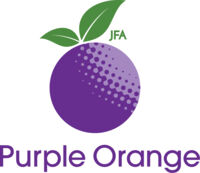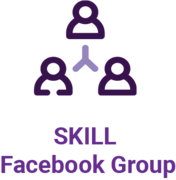Please login or register for an account to get started on building your SKILLs!
Your Rights to Dream
Key Learnings
- Everyone has the right to dream
- Historically, people living with disability have not had the same rights as everyone else
- Opportunities, options and possibilities for people living with disability have improved, and continue to improve

Dreams are incredibly important. Your hopes and aspirations guide what you do with your life. In the past people living with disability have not had the chance to live up to their dreams much at all because they didn’t have many choices or opportunities to do what they wanted with their lives.
How things used to be
Many people living with disability haven’t always had as many options as other people. People living with disability have often been told what they can do, and where and when and how they must do it. Less options at school, less choice about work, less say about where and who they live with. People living with disability have usually been treated very differently to others and haven’t been included in our communities. This is because there has been, and sometimes still is low expectations of people living with disability and what we actually can and want to do.
There has been much work done to change this. Check out the links below to read about some of these changes.
What's changed
The United Nations has worked for decades to change attitudes and approaches to people living with disability. The Convention on the Rights of Persons with Disabilities was adopted on 13 December 2006 at the United Nations Headquarters in New York.
It is a human rights instrument that states that all people with all types of disability must enjoy all human rights and fundamental freedoms. It also states that people with disability are capable of claiming those rights and making decisions for their lives based on their free and informed consent as well as being active members of society. Australia is a signatory to the Convention and is bound to follow it.
The video below by the Disability Advocacy Rights Unit (DARU) highlights these rights: Rights Under the UN Convention on the Rights of Persons with Disability (UNCRPD)
The disability sector in Australia used to operate under the model of ‘block’ funding, where governments would subsidise organisations to provide many different support services, leaving people with disability very little choice over support providers and decisions in their lives.
Years of advocacy work by many individuals and organisations across Australia have resulted in a shift to individual funding, which provides more choice and flexibility for people living with disability.
The Shut Out Report in 2009 highlighted that people living with disability were not being supported to be full members of our society. The report provided details on the key barriers and issues facing people with a disability, their families and carers.
The Productivity Commission Report (2011) on the disability sector found that "The disability support 'system' is inequitable, underfunded, fragmented, and inefficient and gives people with a disability little choice ... The central message of this draft report was that a real system was required - with much more and better-directed money, a national approach, and a shift in decision-making to people with a disability and their carers.” In other words, we were certainly NOT meeting our UN requirements!
This led to the development and introduction of the National Disability Insurance Scheme (NDIS) which now provides people living with disability individual budgets to choose the services and supports they want. People living with disability now have more options, possibilities and opportunities to achieve goals they have identified and lead valued lives they choose.
The system and scheme is still evolving, and we are all getting used to working with them. There are a lot of ‘rules’ ensuring people living with disability are fully included and supported members of our community - but we all know this doesn't always happen. Why is it still so hard for people living with disability to lead lives that they choose? And what exactly is a good and valued life anyway?
The JFA Purple Orange Model of Citizenhood Support answers this well. It is a framework for advancing people’s life chances and moving people into good, valued lives.
Watch the video below to learn about the Model.
The Model Of Citizenhood Support from JFA Purple Orange on Vimeo.
This Model describes a good life as being characterised by valued roles (termed Citizenhood) and by the decisions each person makes (termed Personhood).
The Model is a great concept for helping people living with disability to move into good, valued lives through ‘the Four Capitals’: key areas of capacity and growth that together represent an individual’s life chances.
Model of Citizenhood Support
| Personal capital | Knowledge capital | Material capital | Social capital |
|---|---|---|---|
| This is how you see yourself, and includes your self-worth, personal vision of a good life, insight into your strengths, your confidence and resilience | Access to up-to-date relevant and quality information, how you use your own knowledge and skills, and learning new knowledge and skills | Your own personally held resources (your 'stuff', money, home, etc...) and your access to public material assets (community centres, libraries, public transport, etc...) | The extent to which you are connected to others, and have the meaningful relationships which come from those connections |
So in what ways do your own levels of Capital affect your life? Have a think about it and write your answers below.
There are no right or wrong answers here. The model is simply a way to encourage you to reflect on how you are currently being supported or alternatively how you are supporting someone.
During the workshops you can access your answers and review them to reflect on. You can also download them and keep them as a reference after the workshops.


